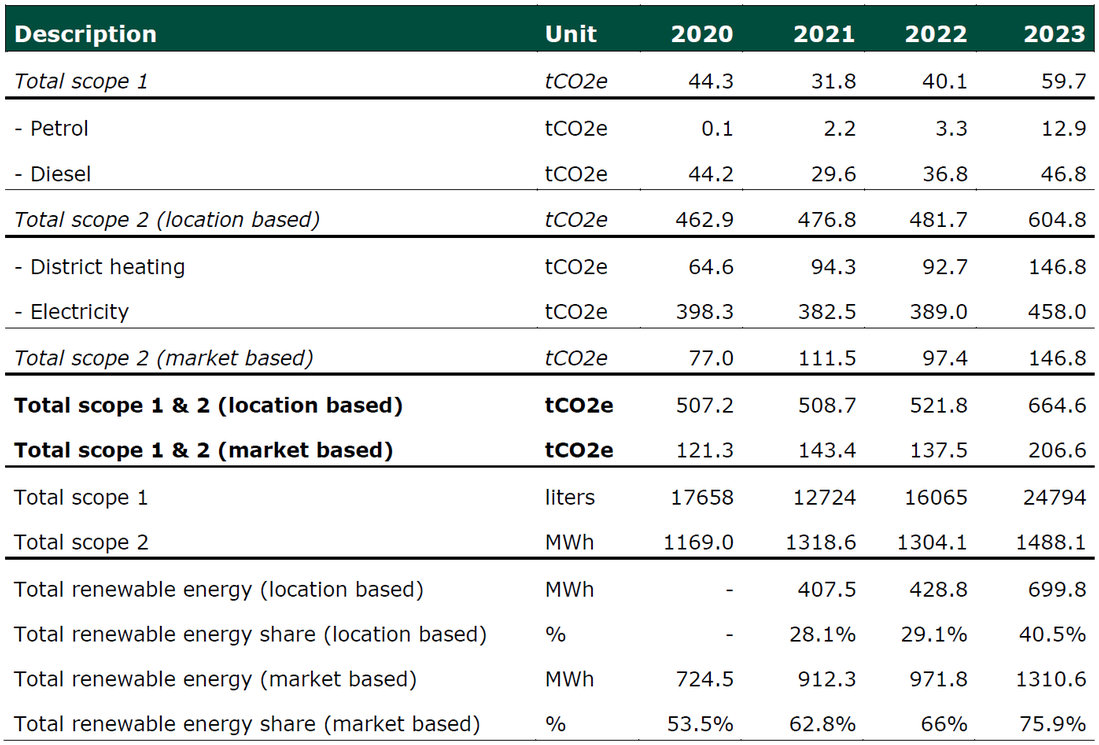
Winning stories - Highlight
GHG Carbon Footprint 2020 - 2023
This report gives an overview of the Eltwin Group greenhouse gas (GHG) emissions of scope 1 and scope 2. We use the online platform CEMAsys to calculate our carbon footprint. The carbon footprint is calculated on the basis of the Greenhouse Gas Protocol, which is the world’s most widely used greenhouse gas accounting standard for companies.
Eltwin Group is a part of the NIBE Group, and it is our ambition to contribute to their sustainability targets for responsible business conduct. NIBE has set a long-term goal to be carbon neutral by 2050. On short-term, the goal is to reduce CO2 emissions by 65% between 2019 and 2030. This goal is based on reducing direct (scope 1) and indirect (scope 2) emissions.

The total CO2e emissions should be considered in the context of Eltwin Group’s business growth each year, which naturally leads to an increase in CO2e emissions. Looking forward, we aim to make the emissions more comparable by additionally calculating the carbon footprint per unit produced and per million DKK turnover. However, this has not been possible with the carbon footprint 2023 because we do not have all data for scope 3 yet. Therefore, these calculations would not be accurate without the CO2e emissions from scope 3.
Scope 1 includes the direct emissions from sources owned or controlled by Eltwin Group.
Our scope 1 consists mainly of transportation in Eltwin’s cars in Denmark and Poland. This data varies over the years 2020-2023, partly due to the pandemic. Another reason for the variation is our data sources. In relation to purchased fuels, we have previously used credit cards as payment instead of fuel cards. This has prevented us from gaining full insight into our purchased fuels. We have changed our internal procedure to ensure an improved data collection and expect more precise data going forward.
Scope 2 includes the indirect emissions from purchased energy; electricity and district heating where we have operational control.
Scope 2 location-based emissions are calculated by summing up the emissions from district heating and location-based electricity. District heating emissions are based on the kWh consumption and are calculated using emission factors from local production mixes or average IEA (International Energy Agency) statistics. Location-based electricity emissions are calculated by applying the appropriate electricity production mixes from IEA statistics.
Scope 2 market-based emissions are calculated differently. District heating emissions are the same as for the location-based method. With electricity, the whole Eltwin Group have renewable energy certificates. With these certificates we can guarantee the origin of our electricity and reduce our market-based CO2 emissions. With the certificates it is certified that the electricity is produced exclusively by renewable sources with an emission factor of 0 gram CO2e per kWh. If there is any electricity not covered by the certificates, the emission factor is based on the remaining residual mix from IEA.
Scope 3 includes the indirect emissions resulting from value chain activities. The scope 3 emissions are a result of the company’s upstream and downstream activities, which are not controlled by the company. We are currently working on gathering data for scope 3 and this includes involvement of our value chain. We have started to contact some of our suppliers with a request for specific emissions on our purchased goods and services. We update this on an ongoing basis as we gain access to more supplier specific data. Data on upstream and downstream transportation is provided by the freight companies and data on waste from our waste distributor. Moreover, we have conducted a survey among our employees about employee commuting. The scope 3 carbon footprint is on our agenda for 2024.